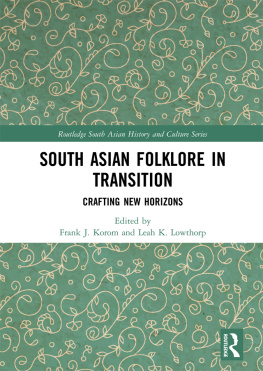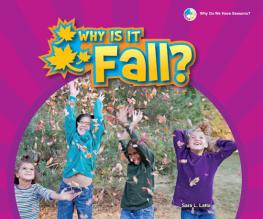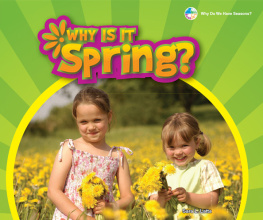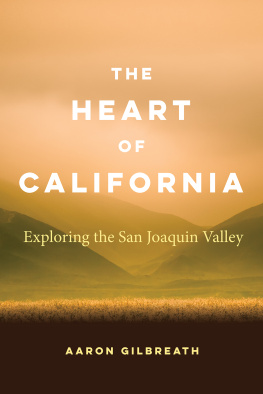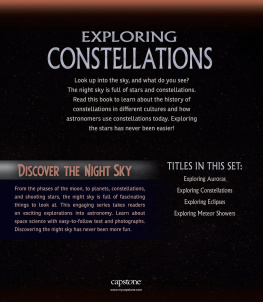
This edition is published by BORODINO BOOKS www.pp-publishing.com
To join our mailing list for new titles or for issues with our books borodinobooks@gmail.com
Or on Facebook
Text originally published in 1936 under the same title.
Borodino Books 2017, all rights reserved. No part of this publication may be reproduced, stored in a retrieval system or transmitted by any means, electrical, mechanical or otherwise without the written permission of the copyright holder.
Publishers Note
Although in most cases we have retained the Authors original spelling and grammar to authentically reproduce the work of the Author and the original intent of such material, some additional notes and clarifications have been added for the modern readers benefit.
We have also made every effort to include all maps and illustrations of the original edition the limitations of formatting do not allow of including larger maps, we will upload as many of these maps as possible.
CALIFORNIA INDIAN FOLKLORE
AS TOLD TO
FRANK F. LATTA
BY
Wah-nom-kot, Tawp-naw, I-chow, , Pah-mit,
Ah-ka-dih-nim, Wah-hum-chah, Po-hut, Ya-a-lut,
To-haw-she, Nih-lah-poo, Lee-mee, Chah-am-suh,
Las-yeh, Pay-mi, and To-too-yah
A Collection of California Indian Folklore Tales which were told during the long Winter evenings long before the White People came to California
ILLUSTRATED
TABLE OF CONTENTS
Contents
TABLE OF CONTENTS
ILLUSTRATIONS{*}
Wah-nom-kot Playing Hoo-cho-ish
Lee-way-nit and Hawt-toy
Tawp-naw
Wah-hum-chah
Too-lahm-nee-oo
Pah-mit
Nih-lah-poo
Las-yeh, Chah-am-suh and Toi-eh-yets
Wow-cawt and Yah-nis-tah
Hoey, the Deer
Kreyenhagen Hills and Kettleman Plains
Paw-kawk-witch, the Hog Wallows
Troke-lin-see, Eagles Home
Wah-nom-kot and Ahng-ush-in
Mo-ho-o, the Bear
Indian Baskets (Photo by Dorman)
Wah-nom-kot and Puh-wus, the Mortar
Chee-tee-tik Now-suh, the Sliding Rock
Yoi-mut
El Capitan (Photo by Boy sen)
To-too-yuh, Foamiyig Water (Photo by Wright)
Cave of Orpheus
Jerky-Covered Rock
Half Dome (Photo by Boysen)
Lee-mee, Yosemite Indian Chief (Photo by Boysen)
Kern River and Kern River Bluffs (Photo by Dorman)
Village of I-ah-pin
Pay-mi
Stone Indian Women of Wa-mih-low
I-chow and Wah-nom-kot
Yo-yoo-sil, the Racetrack
Waw-cun-naw
Ti-up-in-ish
End of the Trail
FOREWORD
OO-DUM-TUNG, THE STORY TELLERS
WHEN a long story was told, it was interrupted just when the children were most interested. Grandfather would stop and say, Now, we will put them all in the bag; put in Mih-kit -tee; put in Coo-choon and Ki -yoo and everyone. We will tie the bag and open it again tomorrow night. Then he would make the motions of tying the bag. The children would have to go to bed without hearing the end.
*****
THE PICTURE: Wah-nom -kot, one of the Story Tellers, playing the ancient womans game of Hoo-cho -ish. The counters are halves of walnut shells. The tray is of native grasses and shows the wild goose design.
OO-DUM-TUNG, THE STORY TELLERS
DURING the long evenings, before the white people came to California, the old Indians sat around their campfires and told stories to the young people.
These are some of the old-time stories told in those old, old days. There were then many thousands of Indians in what is now the great state of California.
These simple stories help us better to understand and appreciate the primitive people who lived here when Shuh -quoy, the Elk, and Suey -yohl, the Antelope, roamed our state. They also interest us in our own California, much of it as beautiful as anything in the world. By reading these stories you will learn many of the Indian names for the native birds and animals and for the natural wonders of California.
Many old California Indians have told us these stories so that their grandchildren and great-grandchildren may read them long after the old people have gone to the Happy Hunting Grounds.
The old Indian story says that at first there were only birds and animals on the earth. They lived like people. In those days Ki -yoo, the Coyote, did not run and catch the squirrels. He hunted them with bow and arrow. None of the birds, except Bald Eagle and his son, Black Eagle, could fly. They walked and ran on the ground like people.
When the old-time bird and animal people created Mi -eh, the Indians, they took new forms and went away to the mountains to live as we see them today. They then gave up their old villages to the Indians.
In the old days before Mi -eh, the Indians came, the old-time bird and animal people could always come back to life after they were killed. You must remember this when you read the Yokuts story of E -sha Num -uk, the Indian hide-and-go-seek game, and about the Great Famine. It was Ki -yoo, the Coyote, so the Yokuts say, who wanted everyone to die so they could not come back to life. For that reason the Yokuts do not like Ki -yoo very well.
The preparation of these simple stories has not been easy. It has taken many years of work among the few remaining Indians to obtain the legends. The labor of preparing them as they are presented here has occupied many weeks more. The preparation is not perfect. But they are really the old-time stories as told by the Indians themselves. Nothing has been added to them. Much has really been lost.
The old Indian story tellers, called Oo-dum -tung by the Wuk-chum -nee Yokuts, were masters of the story-telling art. The entire theme was enacted as it was told. Only after close study can the trained elocutionist expect to put into the stories the little niceties of expression and inflection, along with the imitations of various bird and animal sounds and actions that accompanied them in the old days as they were told around California campfires by the dusky-visaged Indians.
F. F. LATTA.
Shafter, California
February Ninth
Nineteen Thirty-Six
HOW THE INDIAN WORDS ARE PRONOUNCED
Origin of Indian Words
MANY Indian words sound like the thing they represent. The Yokuts word for deer is Hoey . It is sounded sharply, like the snort of a startled deer. The Choi-nim-nee Yokuts word for squirrel is Seeth -kil and is sounded like the bark of a squirrel. Their word for hawk is Soo-hoop and was obtained in the same way that we obtained our word swoop, an imitation of the sound made by the hawk in diving after prey.
Many other Indian words, and English words too, had the same beginning.
*****
THE PICTURE: Lee-way -nit and Hawt -toy, grandchildren of Wah-nom -kot and I -chow, wearing the kind of clothing used long ago by the Indians. Their parents were both Yokuts Indians who lived on the Kaweah River near Visalia in Tulare County.







